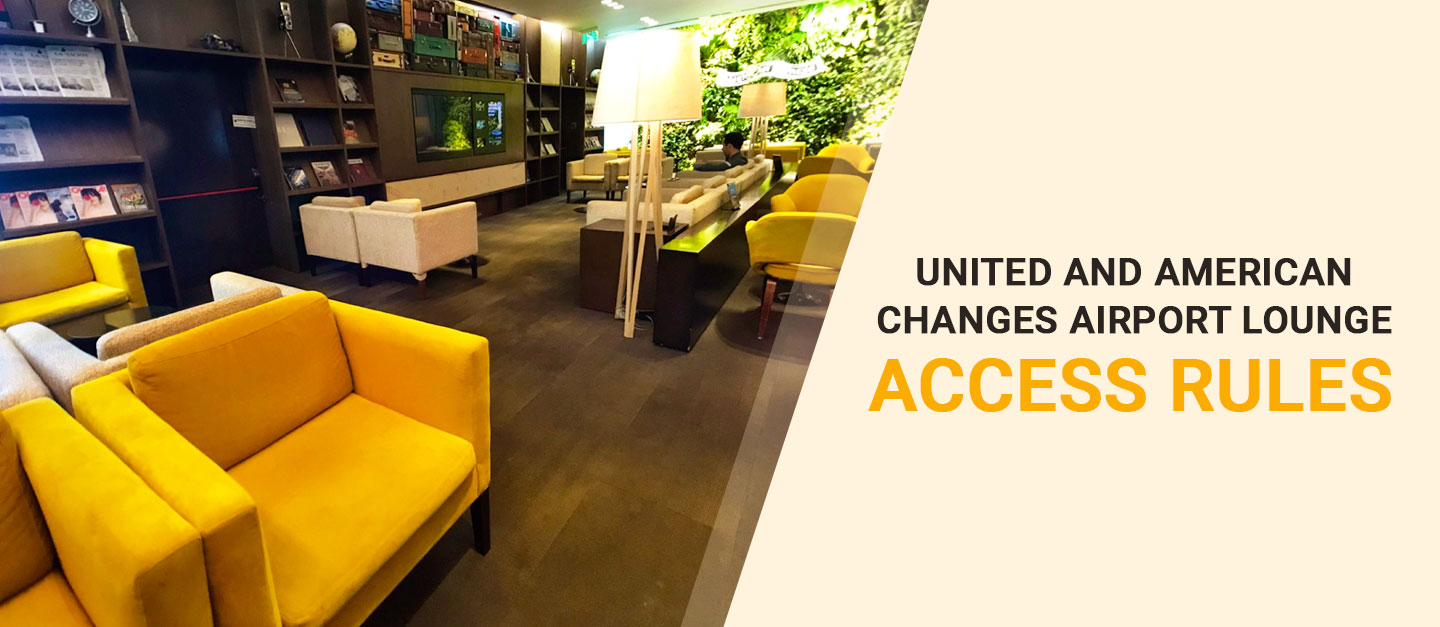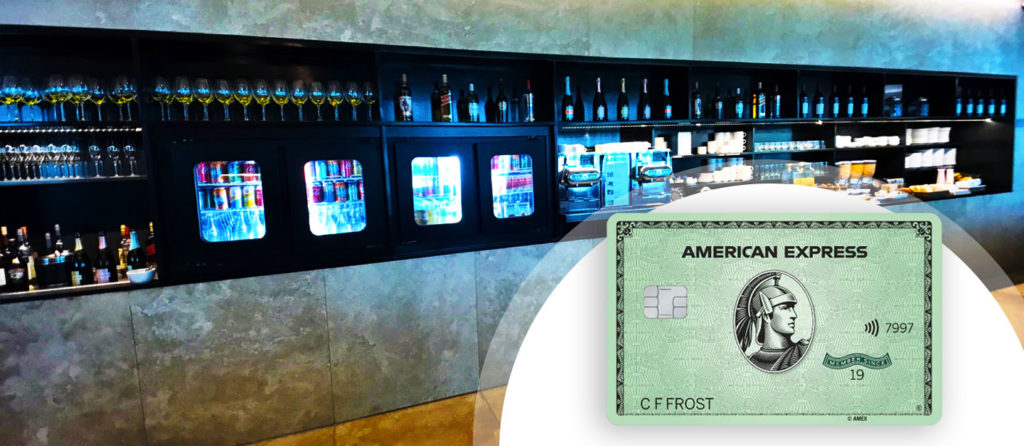
I’m sitting in a very nice American Express Centurion Lounge in Buenos Aires’ Ezeiza International Airport just as lounge access is being cut off for millions of flyers on Delta, United and American Airlines.
The Big Three have decided to change lounge-access policy in a way that upends how business travelers travel … and that means you have to rethink the credit cards you own.
Why Are the Big Three Carriers Curtailing Lounge Access
As of November 1, 2019, American and United began limiting access to their respective airport lounges to travelers who are traveling that day on that airline or its partners. American and United are following in the footsteps of Delta, which instituted a similar policy previously.
As a frequent traveler who regularly partakes of airport lounges, I know their value. Departure halls can be crowded, noisy, rambunctious places where it’s hard to find a seat, a place to recharge your electronics and where Internet access can be spotty or impossible.
A lounge is an oasis to grab a quick shower, a bite to eat and a drink, hook up to decent internet to reconnect with the office or family, and recharge yourself and your electronics for the onward journey.

Indeed, I’m in the Amex Centurion Lounge after a 14+ hour flight to B.A. from Zurich, Switzerland, and on a four-hour layover before heading to Montevideo, Uruguay. Sitting here writing in a quiet lounge, I reflexively understand how this new policy can be frustrating, particularly to a business traveler.
But I also understand the rationale for limiting access to just those people who are traveling on a particular airline on a particular day. I can’t count the number of times I’ve walked into an American or United lounge only to find so many people that together we could successfully invade a small country.
The airlines know many of those travelers aren’t flying that day on the airline sponsoring that lounge. They’re flying on rival carriers, but they’ve gained access because they bought a lounge membership or because they own a premium credit card that provides access.
These new policies undermine that approach to lounge access for travelers.
How Do These Changes Affect Premium Airline Credit Cards?
In short: You’re screwed.
American, Delta, and United all offer high-end credit cards for which lounge access is a benefit. American has the Citi / Aadvantage Executive World Elite Mastercard. United offers the United Club Card (from Chase), and Delta has the Delta Reserve Credit Card from American Express.
None are cheap. They all charge annual fees of $450, with Delta jumping to $550 in January 2020.
In the past, regardless of what airline you were traveling, all you had to do was show your credit card to gain lounge access. Now, with the American Airlines Mastercard or the United Club Card, you will have to show a same-day boarding pass on American (or a Oneworld partner) or United (or Star Alliance partner) to gain access to those respective airport lounges.
Delta, meanwhile, already requires that a Delta Reserve cardholder present a boarding pass for Delta-marketed/operated flight to gain access to Delta Sky Club
So, the question becomes…
Is The $450/$550 Annual Fee Worth The Cost For Lounge Access?
If you’re a frequent traveler who regularly sticks to American (Oneworld), United (Star Alliance) or Delta (SkyTeam) flights, then the premium cards still make sense because of all the added benefits and the lounge access.
But if you’re a traveler who flits between various airlines and picked up an airline-branded premium card just to gain lounge access even if you’re not always flying that particular carrier, then you’re wasting your money. The benefit becomes useless since you will no longer have lounge access on days you’re not flying that particular carrier. For you, there’s a better strategy.
What Is The Better Strategy For Gaining Lounge Access?
If lounge access is critical when you’re traveling on business or with family, you have a few choices:
Both come with access to more than 1,200 airport lounges across roughly 130 countries.
Atop the list are the American Express Centurion Lounges, like the one here in Buenos Aires. They’re exceptionally nice, among the best lounges in the traveling world. The food selection is typically broad and quite tasty. The ambiance is comfortable and classy. They are, in short, some of my favorite airport lounges.
The challenge is that Centurion Lounges are not widespread; they exist in only a handful of airports. But where there are no Centurion Lounges, the Amex Platinum cards give you access to Priority Pass Lounges, Escape Lounges, Airspace Lounges, Plaza Premium Lounges and a few others.
Of course, both Amex Platinum cards are premium cards with $550 annual fees. So, you’re still paying a pretty penny – though both cards offer a plentitude of other valuable benefits that easily compensate for the big fee.
Use Lounge Credits from the American Express Green Card
The Amex Green Card, the original American Express, is cheaper at $150 a year. And while it doesn’t offer the same kind of lounge access as its pricier Platinum brother, Amex Green does come with $100 in annual Lounge Buddy credits.
Lounge Buddy is an app that offers access to a network of partner lounges in nearly 200 airports in more than 50 countries. I’ve passed through several of the lounges in the Lounge Buddy network and they range from luxe to utilitarian.

Given that you must pay for lounge access through Lounge Buddy, and given that different lounges impose a different costs (roughly $25 to $50 per visit) your $100 credit with Amex Green will not go very far. But if you’re only an occasional traveler, and you’re using the credits to access lounges for long layovers, then Amex Green’s Lounge Buddy credits will likely serve you well.
Get a Card That Offers Priority Pass Membership
I travel through a lot of international airports that don’t have a dedicated oneworld or Star Alliance lounge. So I regularly whip out my iPhone to display my Priority Pass membership tied to my Amex Platinum card.
Depending on the airport, Priority Pass lounges range from functional to fairly nice. They’re certainly not Centurion Lounges or the tricked out lounges such as British Airway’s First Lounge in Heathrow’s Terminal 5, or Turkish Airlines’ supremely stunning lounge at Istanbul’s new airport.
But when you just want a quiet place to relax, grab a snack and a drink, and simply recharge your phone and tap into the Internet for free … well, a Priority Pass lounge is an oasis in the desert. Better yet, you can find them in more than 500 cities around the world. Many airports have multiple Priority Pass lounges.
While you can gain access with the Amex Platinum cards, several other credit cards also offer Priority Pass membership as well:
- Chase Sapphire Reserve: One of the best all-around travel credit cards. Annual fee is $450.
- Citi Prestige Card: Not as good as Chase Sapphire Reserve or Amex Platinum, but it does offer Priority Pass membership. Fee: $495.
- Mastercard Black: Again, a runner-up to Sapphire Reserve and Amex Platinum, but also has Priority Pass access. Fee: $495.
- Marriott Bonvoy Brilliant American Express: Generally on par with the Amex Platinum, and a good card if you are a Marriott fan. Fee: $450.
- Hilton Honors Aspire: An American Express card, similar to the Platinum and Bonvoy Brilliant cards. Fee: $450.
You can see lounge access is expensive, no matter which card you go with.
The Cheaper Way to Access Priority Pass Lounges
If you don’t fly as frequently, you can gain access to Priority Pass lounges with the Hilton Honors American Express Surpass card. It’s just $95 a year, and it comes with 10 free Priority Pass lounge visits each year (each guest you bring in, also counts as one of your 10 visits).
This can be a very economical way to gain lounge access if you’re traveling just a few times a year.
The Wrap Up
The changes imposed by American, United and Delta radically change the way airport lounge access works, and it diminishes the value of some premium, airline-branded credit cards since it makes the lounge-access benefit less important.
But there are still ways to gain lounge access, if it’s important to you. And depending on how many times you travel in a given year, there are relatively inexpensive ways to access lounges.
